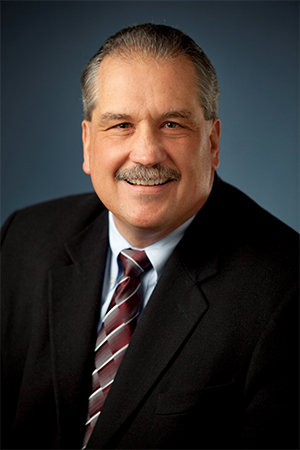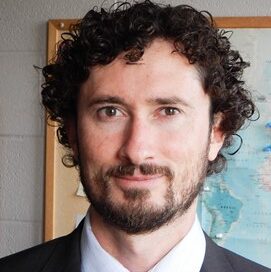Bishops need to engage the conversation now on driverless cars
Published: December 16, 2016 / Author: Timothy Carone
First of all, why should Catholic bishops – or, for that matter, the Catholic Church at large – even care about driverless cars? Isn’t that a discussion for tech geeks?
On the surface, it might seem so. The rapid advance of artificial intelligence, which makes advancements such as driverless cars even viable, has broader repercussions that may even shape the definition of “human.” This is where it is imperative that religious leaders be part of the evolution.

Let’s start with some background.
In January 2016, the World Economic Forum Annual Meeting in Davos, Switzerland, brought together world leaders from all sectors to discuss the theme “Mastering the Fourth Industrial Revolution.”
This revolution, which many think is already upon us, is driven by the advances in technologies over the past 50 years, and most recently, with the emergence of machines that make decisions, a regime heretofore reserved only for humans.
These machines or autonomous systems behind this revolution basically do four things: (1) collect data, (2) turn data into information, (3) make a decision based on the information, and (4) act or implement the decision.
It is the latter two that will be the most difficult for humans to accept and understand. To this point, they have been represented to us as the Terminator or other types of killer robots and cyborgs. We conflate the last two items with concepts such as consciousness and intentionality.
This conflation will not go away easily. As these autonomous systems become exponentially adept at the four steps, they will appear to us to be actually alive in some sense. Like a human is alive.
However, we must keep in mind: They are not alive. Further, there is general agreement among researchers that systems that demonstrate intentionality are decades, if not centuries, away.
The best example we have currently of these autonomous systems are driverless cars. These cars have dozens of sensors to collect data, hundreds of computers on them that run hundreds of millions of lines of code to turn the data into information and software we term “artificial intelligence” that makes a decision and takes action.
This loop of collect, interpret, decide and act is executed thousands of times a second by a car. The cars we drive today have driverless attributes in them already, though some of these attributes are not yet enabled for use.
By 2020 and certainly by 2025, we should expect to see cars next to us on the road where the driver is sleeping or watching a movie on the dashboard display. Or perhaps the only person in the car is in the backseat conducting a virtual business meeting.
Here is where the picture gets more complicated for people of faith.
The leaders of religious and service organizations will have to embrace autonomous systems in ways that are similar to and different from the way they now use the Internet, social media and mobile devices. On a strategic level, they impact the mechanics of evangelization.
On a tactical level, driverless cars provide transportation as a service. They can pick up the elderly or disabled people at their homes and bring them to church or a place of worship on demand. They can make continual runs between a grocery store and the homes of those in need.
Ruggedized versions of driverless cars can reach people in need in disaster areas, bringing them food and medical supplies. The list of applications is limited only by the imagination, and can change the mechanics of evangelization in ways greater than the Internet and mobile devices have accomplished.
All of that is to the good. The challenge to religious leaders is introduced because autonomous systems make decisions and take action. It is the thing that sets them apart from the technologies we use today.
Making decisions and taking action are accompanied by the potential for unpredictability and possible irreversibility of deploying something that makes decisions and acts faster and better than the humans who specified its objectives.
Humans program the autonomous system and then let it get “better” with time on its own, as it acquires more data and changes its behaviors to optimize its performance. There is no guarantee that this optimization process will result in the intended behaviors that we call ethical.
There is also no guarantee that this behavior will be detected and realized until long after it has occurred.
For example, the car companies are deciding the behaviors of a driverless car. The default action being programmed is to protect the humans in the car even if that means killing humans outside the car. There is no guarantee that this behavior is sustainable over time as the cars continually change.
There are alternatives to this default action, but there is no construct developed by religious leaders to guide the designers of autonomous systems, and the former are on the periphery or invisible to the latter and what they are doing.
Religious leadership needs to have an articulated position on their expectations for the ethical behavior of autonomous systems. Church leaders in particular need to embrace autonomous systems, accept their future role, and provide a presence in those discussions occurring now amongst car companies and researchers who are deciding in a religious vacuum, what ethical behavior means for autonomous systems.
Decisions are being made that are the building blocks of future ethical behaviors. It will be difficult to impossible to change these ethical behaviors once they are in place.
Note: This column was published originally by Crux.com.




